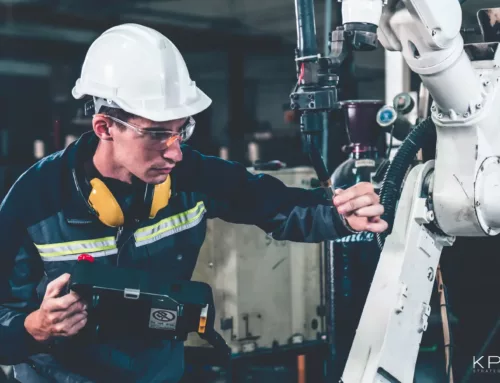Before Henry Ford’s revolutionary idea to streamline automobile production was more akin to a project-based approach as compared to an approach of process innovation. In considering the advent of the history of Business Improvement methodologies, we recall a time when automobiles were a luxury item, built with the craftsmanship and patience reserved for expensive, bespoke products only. Here’s the story of how that project-oriented craftsmanship evolved into the efficient, process-driven mass production that Ford is famous for.
Before Ford: Automobiles as Projects
Before Ford introduced the assembly line, each car was essentially a unique project. Skilled workers would build automobiles by hand, one at a time, at stationary workstations. A single car required several teams of craftsmen, each specialized in their own trade. For instance:
- Engineers and mechanics would assemble the engine.
- Carpenters would build wooden components like dashboards.
- Metalworkers would handcraft the body panels.
- Leather workers would stitch together the seats and interiors.
Every car was built to order, with variations in design and parts that required custom work. Workers had to go back and forth to fetch parts and tools, and there was little standardization. Each car would take weeks or even months to finish, and because the work was done by skilled laborers, the costs were extremely high. Automobiles were, therefore, a luxury item affordable only to the wealthy elite.
In this pre-Ford world, each car was essentially treated like a project: a unique, one-time effort requiring careful planning, skilled labor, and significant resources. Each car was different, and because of this, the process was neither repeatable nor scalable. It was inefficient, costly, and slow.
Henry Ford’s Transformation: From Project to Process
Henry Ford changed everything by rethinking the way cars were built. He didn’t invent the automobile, but he did invent a new way to produce them. The secret? Turning car manufacturing from a project-based approach into a process-driven system. Before diving into this section, we suggest recapping the differences between a project, process and process improvement.
The Key Innovations
- Standardization: Ford introduced standard parts that could be used interchangeably across all models. This meant that instead of crafting unique parts for each car, factories could produce parts in bulk. It reduced the variability in production and simplified assembly.
- Assembly Line: The most groundbreaking innovation was the introduction of the moving assembly line in 1913. Instead of having skilled craftsmen build an entire car from start to finish, Ford created a sequence of repeatable steps where each worker specialized in just one part of the process. Cars were built as they moved along a conveyor belt, with each worker adding their part in a synchronized manner.
- Division of Labor: Instead of having craftsmen who could do many things, Ford focused on training workers to be exceptionally good at one task. Workers could become highly skilled in their specific station, reducing errors and increasing speed.
The Impact
By transforming car manufacturing into a process, Ford was able to produce cars far more efficiently. The time to build a single car dropped dramatically — from over 12 hours to just 93 minutes. The cost of a Model T fell from $825 in 1908 (about $23,000 today) to just $260 by 1925 (around $4,000 today). Suddenly, the automobile was no longer a luxury item but something the average American family could afford.
This shift from project-based work to process-oriented manufacturing had several profound effects:
- Higher Efficiency: With a standardized process, Ford was able to produce far more cars in less time.
- Lower Costs: Standardized parts and specialized labor dramatically reduced costs, allowing Ford to lower prices while still making a profit.
- Scalability: Because the process was repeatable, Ford could scale production to meet increasing demand.
- Consistency: Every Model T that came off the assembly line was nearly identical, ensuring a high level of quality.
The Lesson for Projects vs. Processes
Ford’s transformation of automobile production illustrates the fundamental difference between projects and processes:
- Projects are unique, one-time efforts with a defined beginning and end. Each car built before Ford was a separate project, tailored to specific customer requirements.
- Processes are repeatable, continuous activities designed for efficiency and scalability. Ford’s assembly line turned car manufacturing into a process, allowing him to build more cars, faster and cheaper, with consistent quality.
This story serves as a great metaphor for modern businesses. Projects are necessary when you’re trying something new or customized, but once you find a repeatable way to achieve a result, turning it into a process can unlock massive efficiency and scalability.
The key lesson is to identify areas where your business is treating ongoing work as a series of projects, and then find ways to convert that work into a streamlined, standardized process.
Taking Process Improvement to the Next Level
After Henry Ford revolutionized manufacturing with his assembly line, the next major leap forward in automobile production came from Toyota. While Ford’s assembly line focused on efficiency through standardization and division of labor, Toyota introduced innovations that took lean process improvement to yet another level. These advancements focused not just on producing more cars faster but on continuously optimizing the way cars were made.
Toyota’s approach transformed the automobile industry again, showing how the evolution of processes can lead to substantial gains in efficiency, quality, and adaptability. Here’s how Toyota’s methods are examples of process improvements:
Continuously Improve With Our Latest News & Updates
The Toyota Production System (TPS)
In the mid-20th century, Toyota developed the Toyota Production System (TPS), a new approach to manufacturing that prioritized efficiency, waste reduction, and quality improvement. This system became the foundation of what we know today as Lean Manufacturing. Unlike Ford’s rigid assembly line, which prioritized mass production, Toyota focused on flexibility, quality, and continuous improvement. TPS was designed to refine the existing process and improve it continually.
Key Elements of Toyota’s Process Improvements
- Just-In-Time (JIT) Production
- What It Is: JIT is a system where parts and materials are delivered exactly when they are needed in the production process — not before, and not after. This minimized the need for large inventories and reduced storage costs.
- Why It’s a Process Improvement: In Ford’s original system, parts were produced in bulk and stored, leading to excess inventory and waste. Toyota’s JIT system reduced waste by aligning production closely with actual demand. It made the process more efficient, agile, and responsive to customer needs.
- Kaizen (Continuous Improvement)
- What It Is: Kaizen is a philosophy of continuous, incremental improvement. It involves everyone in the organization — from executives to assembly line workers — in identifying and implementing small improvements to the production process.
- Why It’s a Process Improvement: Unlike Ford’s static assembly line, which focused on doing the same thing over and over, Toyota’s Kaizen approach encouraged employees to find new ways to do things better. This ongoing process of optimization led to improvements in quality, efficiency, and cost.
- Kanban (Visual Workflow Management)
- What It Is: Kanban is a visual signaling system that manages workflow and inventory. It ensures that production is based on actual demand rather than forecasts, reducing overproduction and waste.
- Why It’s a Process Improvement: Ford’s system relied on producing large batches to maximize efficiency, which often led to overproduction and excess inventory. Toyota’s Kanban system allowed for smoother, more flexible production with minimal waste, improving process flow and responsiveness to customer orders.
- Poka-Yoke (Mistake-Proofing)
- What It Is: Poka-Yoke refers to designing processes and systems in such a way that errors are prevented or made immediately obvious. This ensures that defects are caught early, reducing rework and waste.
- Why It’s a Process Improvement: Ford’s process focused on speed and volume, often at the expense of quality. Toyota’s emphasis on mistake-proofing ensured that defects were caught early in the process, resulting in higher-quality products and lower costs associated with fixing errors later on.
- Focus on Quality at the Source
- What It Is: Instead of inspecting quality only at the end of the line, Toyota empowered every worker to stop production if they identified a defect. This focus on quality throughout the entire process is called Jidoka.
- Why It’s a Process Improvement: Ford’s assembly line was designed to run continuously and only stopped when absolutely necessary, sometimes leading to defects being overlooked until the end. Toyota’s approach improved quality control throughout the process, reducing defects and improving customer satisfaction.
The Impact of Toyota’s Process Innovation
Toyota’s innovations demonstrated that continuous process improvement could outperform the efficiency gains Ford achieved with the original assembly line. Here are some of the key impacts:
- Higher Quality: By integrating quality checks into every step of the process (Jidoka), Toyota ensured that defects were caught and corrected early. This resulted in cars that were more reliable and had fewer issues, giving Toyota a reputation for quality.
- Greater Flexibility: The Just-In-Time system and Kanban allowed Toyota to quickly adjust production to match demand. This flexibility enabled Toyota to avoid the waste and inefficiencies of overproduction and to better respond to market changes.
- Reduced Costs: Continuous improvement (Kaizen) led to gradual, ongoing cost savings as Toyota streamlined its processes, reduced waste, and optimized resource usage. Unlike Ford’s rigid, mass-production approach, Toyota’s system evolved and adapted over time.
- Employee Involvement: By involving workers in continuous improvement, Toyota created a culture where employees were empowered to suggest changes and take ownership of the process. This increased engagement and led to more innovation on the factory floor.
Conclusion: Toyota’s Approach as Process Improvement
While Henry Ford turned car manufacturing from a project into a repeatable process, Toyota took that process and made it flexible, scalable, and continuously improvable. Toyota’s approach to process improvement shows that it’s not enough to simply have an efficient system — you must also be willing to constantly refine and optimize that system to adapt to changing conditions.
In essence, Ford’s assembly line was a breakthrough in turning a project into a process, while Toyota’s advancements were about turning that process into a continuously improving system. The lesson is that even the best processes can be made better, and by focusing on small, continuous improvements, you can achieve significant long-term gains in efficiency, quality, and customer satisfaction. To align projects, process and process improvement projects efficiently, feel free to request a demo of our Project Portfolio Management Software today.




